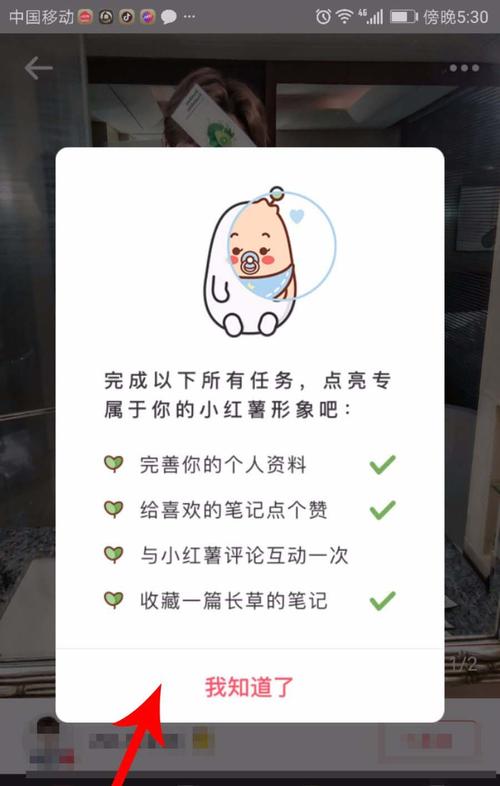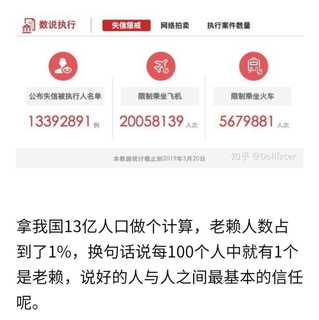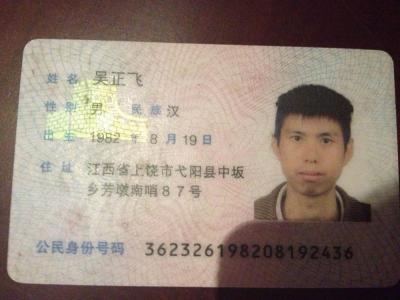2010年考研英语二真题全文翻译答案超详解析
 爱火花
爱火花 瞻卬
瞻卬
去百度文库,查看完整内容>内容来自用户:水中揽月看云起2010年全国硕士研究生入学统一考试英语(二)试题答案与解析Section I Use of English一、文章题材结构分析本文是取材于新闻报道,叙述了猪流感的爆发,产生的严重影响以及政府采取的针对性措施。首段和第二段简述了猪流感的爆发引起世界各国的重视。第三段引用专家的观点,认为瘟疫并不严重。第四段和第五段以墨西哥及美国的情况为例,说明了猪流感的严重性和致命性。第六段叙述了联邦政府针对猪流感的具体措施。二、试题解析1.【答案】D【解析】上文提到“…was declared a global epidemic…”,根据declare的逻辑(“宣布为”),可知应该选D项designated“命名,制定”,而不是C项commented“评论”,这是典型的近义词复现题目。2.【答案】C【解析】本题目可依据“句意”找到意思线索,选出答案,难度在于出处句是个长难句。本句的理解应该抓住alert、meeting和a sharp rise三者的关系,根据after a sharp rise可知是rise(“病例数的增加”)是meeting(“日内瓦专家会议”)的原因,由此可推导出alert并非是meeting的原因,而是结果,即meeting使得alert升级。根据上述分析可以排除B、D选项,B项activated“激活,激起”,D项“促使,引起”,此两项的选择都在讲alert导致了meeting的召开。而C项所以空格处B需逻辑需要,而辑条件。剩余”。此三项无法满足上述逻辑条件。行的,盛行的”,定的第一次世界性瘟疫。管当前
考研英语2010真题第一篇阅读里的一句,求翻译.
 流浪歌
流浪歌跪求2010年考研211翻译硕士英语真题一套。
 一五一十
一五一十 约
约
以下是上外2010年翻译硕士(MTI)考试的真题,贴出来你看看吧 【翻译硕士二外】一、完形填空(全文录入,题目省略)During the first many decades of this nation’s existence, the United States was a wide-open, dynamic country with a rapidly expanding economy. It was also a country that tolerated a large amount of cruelty and pain — poor people living in misery, workers suffering from exploitation.Over the years, Americans decided they wanted a little more safety and security. This is what happens as nations grow wealthier; they use money to buy civilization.Occasionally, our ancestors found themselves in a sweet spot. They could pass legislation that brought security but without a cost to vitality. But alts know that this situation is rare. In the real world, there’s usually a trade-off. The unregulated market wants to direct capital to the proctive and the young. Welfare policies usually direct resources to the vulnerable and the elderly. Most social welfare legislation, even successful legislation, siphons money from the former to the latter.Early in this health care reform process, many of us thought we were in that magical sweet spot. We could extend coverage to the uninsured but also improve the system overall to lower costs. That is, we thought it would be possible to rece the suffering of the vulnerable while simultaneously squeezing money out of the wasteful system and freeing it up for more proctive uses.That’s what the management gurus call a win-win.It hasn’t worked out that way. The bills before Congress would almost certainly ease the anxiety of the uninsured, those who watch with terror as their child or spouse grows ill, who face bankruptcy and ruin.And the bills would probably do it without damaging the care the rest of us receive. In every place where reforms have been tried — from Massachusetts to Switzerland — people come to cherish their new benefits. The new plans become politically untouchable.But, alas, there would be trade-offs. Instead of recing costs, the bills in Congress would probably raise them. They would mean that more of the nation’s wealth would be siphoned off from proctive uses and shifted into a still wasteful health care system.The authors of these bills have tried to foster efficiencies. The Senate bill would initiate several interesting experiments designed to make the system more effective — giving doctors incentives to collaborate, rewarding hospitals that provide quality care at lower cost. It’s possible that some of these experiments will bloom into potent systemic reforms.But the general view among independent health care economists is that these changes will not fundamentally bend the cost curve. The system after reform will look as it does today, only bigger and more expensive.Rather than pushing all of the new costs onto future generations, as past governments have done, the Democrats have admirably agreed to raise taxes. Over the next generation, the tax increases in the various bills could funnel trillions of dollars from the general economy into the medical system.Moreover, the current estimates almost certainly understate the share of the nation’s wealth that will have to be shifted. In these bills, the present Congress pledges that future Congresses will impose painful measures to cut Medicare payments and impose efficiencies. Future Congresses rarely live up to these pledges. Somebody screams “Rationing!” and there is a bipartisan rush to kill even the most tepid cost-saving measure. After all, if the current Congress, with pride of authorship, couldn’t rece costs, why should we expect that future Congresses will?The bottom line is that we face a brutal choice. Reform would make us a more decent society, but also a less vibrant one. It would ease the anxiety of millions at the cost of future growth. It would heal a wound in the social fabric while piling another expensive and untouchable promise on top of the many such promises we’ve already made. America would be a less youthful, ragged and unforgiving nation, and a more middle-aged, civilized and sedate one.We all have to decide what we want at this moment in history, vitality or security. We can debate this or that provision, but where we come down will depend on that moral preference. Don’t get stupefied by technical details. This debate is about values. 二、阅读理解,回答问题Obama Loses a Round While the jury is still out on what President Obama’s China visit has achieved for the long term, the president has most decidedly lost the war of symbolism in his first close encounter with China. In status-conscious China, symbolism and protocol play a role that is larger than life. U.S. diplomatic blunders could reinforce Beijing’s mindset that blatant information control works, and that a rising China can trump universal values of open, accountable government.During Mr. Obama’s visit, the Chinese outmaneuvered the Americans in all public events, from the disastrous town hall meeting in Shanghai to the stunted press conference in Beijing. In characteristic manner, the Chinese tried to shut out the public, while the U.S. unwittingly cooperated. The final image of President Obama in China that circulated around the world is telling: A lone man walking up the steep slope of the Great Wall. The picture is in stark contrast to those of other U.S. presidents who had their photographs taken at the Great Wall surrounded by flag-waving children or admiring citizens. Maybe Mr. Obama wanted a quiet moment for himself before returning home. But a president’s first visit to the wall is a ritual that needs to be properly framed. Mr. Obama could have waited until the next visit, when he could bring the first lady and the children. Instead, he went ahead by himself to pay tribute to China’s ancient culture. In return, the Chinese offered nothing, no popular receptions, not even the companionship of a senior Chinese leader.The trouble for the U.S. started at the town hall meeting two days earlier — a more scripted event than those organized with students for earlier U.S. presidents. There was no real dialogue, as a programmed audience, most of them Communist League Youth members, asked coached questions. The Chinese also rejected the U.S. request for live national coverage and defaulted on a promise to live-stream the meeting at Xinhua.net, the online version of China’s state-owned news agency. Mr. Obama scored a point when he managed to address the issue of Internet freedom after the U.S. ambassador, Jon Huntsman, fielded him the question from a Chinese netizen submitted online.Meanwhile, Chinese officials garnered from the meeting generous quotes from Mr. Obama affirming China’s achievements and America’s expressions of good will, which were turned into glowing headlines for the Chinese media. In this round of the propaganda skirmish, the U.S. scored one point while China reaped a handful. Mr. Obama was similarly shut out from addressing the public in Beijing. At the Beijing press conference, President Hu Jintao and President Obama read prepared statements and would not take questions from reporters. “This was an historic meeting between the two leaders, and journalists should have had the opportunity to ask questions, to probe beyond the statements,” protested Scott McDonald, the president of China’s Foreign Correspondents Club, but to no avail. In a final dash to break through the information blockade, the Obama team offered an exclusive interview to Southern Weekend, China’s most feisty newspaper, based in Guangzhou. Once again, journalists’ questions were programmed and the paper censored. In protest, the paper prominently displayed vast white spaces on the first and second page of the edition that carried the interview. Propaganda officials are investigating this act of defiance.Only the Obama team knows for sure how they allowed themselves to be outmaneuvered. Unwittingly, the U.S. helped to proce a package of faux public events.Pundits argued that the visitors were not supposed to impose the “American way” on China and that America needs to respect Chinese practices. The argument is both patronizing and condescending. Increasingly, the Chinese public has been clamoring for greater official transparency and accountability, while the Chinese government has been making progress on these fronts. No one in his right mind would ask Mr. Obama to lecture Beijing on human rights. But the Chinese public deserves better accounting, no less than Americans citizens.To their credit, U.S. officials did try to get their message out online. But it was the Chinese bloggers who were most active in challenging official information control. They at least fought the good fight with growing confidence, a fight the Americans seem unable to wage effectively. 三、写作。题目是 《waste not, want not》 【英语翻译基础】一、名词解释MDGS Millennium Development Goals 千禧年发展计划Ban Ki-moon 潘基文国务卿 Secretary of State雷曼兄弟(Lehman Brothers)次贷危机subprime lending crisis西部大开发战略strategy of western development 二、英译中China's bubblesA lot of things in China carry a whiff of excess. The cost of garlic is among them: wholesale prices have almost quadrupled since March. A halving of the planting area last year, and belief in the bulb's powers to ward off swine flu, provide some justification for the surge. But anecdotes of unbridled trading activity in Jinxiang county, home to China's largest garlic plant, suggest that the most likely cause is the most obvious – the abundant liquidity swilling through the system. New loans in China may top Rmb10,000bn this year, double the run-rate of the preceding years; 2010 should bring another Rmb7-8,000bn.In the week that Dominique Strauss-Kahn, head of the International Monetary Fund, said asset bubbles were a cost worth paying for reviving growth through loose monetary policy, China needs to distinguish between good ones and bad ones. A bubble in garlic is small, financed by private speculators, and relatively harmless when it bursts. Bubbles in proctive assets – roads, bridges, telecom lines – are also tolerable; capital has been put in place that can be exploited by somebody.But bubbles in property – financed by banks, on non-proctive assets – are doubly destructive. Zhang Xin, chief executive of Soho China, one of the country's most successful privately owned developers, believes that rampant wasteful investment in commercial property has already undermined China's long-term prospects. As for housing, which China began privatising just 11 years ago, prices rose at an annualised rate of 9 per cent between September and October – significantly higher than the ongoing 2.25 per cent one-year deposit rate and the 5.31 per cent one-year lending rate. What's more, this was the eighth successive month of above-trend growth in the national house price index. So far, attempts to arrest price rises have been minor – restrictions你想报哪个学校呢?每个学校的侧重点不同,我建议你给你选中的学校打电话订购试卷。现在买还不晚……翻译硕士包括:基础英语,翻译,政治,综合
考研英语2010年有 什么题型
 人哭亦哭
人哭亦哭 大地震
大地震
考研英语满分100分,包括英语知识运用、阅读理解和写作三种题型。 第一部分是英语知识运用,即我们常说的完型填空,总共10分,20题,每题0.5分。 第二部分是阅读理解,A部分是传统阅读理解,共4篇文章,每篇5道题,共40分。B部分是新题型,5道题共10分。C部分是翻译,从文章中抽出5个长难句进行翻译,5道题共10分。 第三部分是写作。第一题是小作文,应用文写作,要求100字左右,10分。第二题是大作文,要求160-200单词,20分。 2010年第二部分B部分的新题型为段落排序题。第一部分 英语知识运用该部分不仅考查考生对不同语境中规范的语言要素(包括词汇、表达方式和结构)的掌握程度,而且还考查考生对语段特征(如连贯性和一致性等)的辨识能力等。共20小题,每小题0.5分,共10分。在一篇240-280词的文章中留出20个空白,要求考生从每题给出的4个选项中选出最佳答案,使补全后的文章意思通顺、前后连贯、结构完整。考生在答题卡1上作答。第二部分 阅读理解该部分由A、B、C三节组成,考查考生理解书面英语的能力。共30小题,每小题2分,共60分。A节(20题):主要考查考生理解主旨要义、具体信息、概念性含义,进行有关的判断、推理和引申,根据上下文推测生词的词义等能力。要求考生根据所提供的4篇(总长度约为1600词)文章的内容,从每题所给出的4个选项中选出最佳答案。考生在答题卡1上作答。B节(5题):主要考查考生对诸如连贯性、一致性等语段特征以及文章结构的理解。本部分有3种备选题型。每次考试从这3种备选题型中选择一种进行考查。考生在答题卡1上作答。备选题型有:⑴ 本部分的内容是一篇总长度为500-600词的文章,其中有5段空白,文章后有6-7段文字,要求考生根据文章内容从这6-7段文字中选择能分别放进文章中5个空白处的5段。⑵ 在一篇长度约500-600词的文章中,各段落的原有顺序已被打乱。要求考生根据文章内容和结构将所列段落(7-8个)重新排序,其中有2-3个段落在文章中的位置已给出。⑶ 在一篇长度500词的文章前或后有6-7段文字或6-7个概括句或小标题。这些文字或标题分别是对文章中某一部分的概括或举例。要求考生根据文章内容,从这6-7个选项中选出最恰当的5段文字或5个标题填入文章的空白处。C节(5题):主要考查考生准确理解概念或结构较复杂的英语文字材料的能力。要求考生阅读一篇约400词的文章,并将其中5个划线部分(约150词)翻译成汉语,要求译文准确、完整、通顺。考生在答题卡2上作答。第三部分 写作该部分由A、B两节组成,考查考生的书面表达能力。总分30分。A节:考生根据所给情景写出约100词(标点符号不计算在内)的应用性短文,包括私人和公务信函、备忘录、摘要、报告等。考生在答题卡2上作答。总分10分。B节:考生根据提示信息写出一篇160-200词的短文(标点符号不计算在内)。提示信息的形式有主题句、写作提纲、规定情景、图、表等。考生在答题卡2上作答。总分20分本回答被网友采纳
考研英语阅读及翻译题的来源
 唯唯否否
唯唯否否 漫漫看
漫漫看
一、2009年考研英语文章出处 摘选自《2011年考研英语大逆转》 Ning emphasizes that there are many different ways of “living LOHAS.” Ultimately, it’s really about finding a way of life that makes sense and feels good — now and for the long haul. “People are looking internally,” he says, “asking themselves, ‘What really makes me happy?’ Is it the fact that I can go out and buy that giant flat-screen TV, or is it that I can have a quiet evening with my family just hanging out and playing a game of Scrabble?” For Ning, it’s a no-brainer. He’ll take Scrabble every time.同上,如果知道了那杂志还不卖疯掉,还是老老实实复习,比投机的效率高
求2004年考研英语一翻译真题及解析?
 和宫
和宫 沈括
沈括
(61) The Greeks assumed that the structure of language had some connection with the process of thought, which took root in Europe long before people realized how diverse language could be. 句子分析:这是一个带宾语从句,定语从句的复合句,其框架结构分析如下:主句的主、谓结构:The Greeks assumed that 希腊人假定宾语从句:the structure of language had some connection with the process of thought语言结构与思想的过程之间有某种联系定语从句:which took root in Europe(这种想法)扎根于欧洲 时间状语从句:long before people realized how diverse language could be早在人们意识到语言会有多么的不同之前翻译技巧:此句可以采用层层剥茧的方法,先抓住整个句子的结构,然后再考虑具体的措词问题。在理清了上述结构之后,还需注意下面几个词语的处理:assumed 假定;认为;以为the process of thought思想的过程;思维过程took root生根;在…扎下了根很多人不能正确理解这个动词词组的意思,有的译成了“起源于…..”,“在…….出现了”,有的译成了“在….占统治地位”,都是不可接受的翻译。long before 早在…之前;“在…之前早就…” 考生的错误在于不能辨别long before所限定的时间顺序,有译成“在扎根欧洲很长时间之前”,“不久的将来人们就意识到…”, 也有译成“很久以前人们就意识到…”。另外, 不要与before long(不久,不久以后)相混淆diverse “丰富;差异性;多样性;千差万别” 多数人犯错是因为不认识该词意思,凭印象根据拼写类似词而译成“相反;倒转;转换”。how diverse 多么的不同;多么的千差万别could be 可能会是(can 过去式)完整的译文: 希腊人认为,语言结构与思维的过程之间存在着某种联系。这种想法,早在人们意识到语言会有多么千差万别之前在欧洲就已经根深蒂固了。以上是第一题,详解可以找学鸣老师
考研英语一2010年题型变了没
 心心相印
心心相印 莫知其处
莫知其处
2010年考研英语样题已经出炉,全卷与去年相比,题型有了新的变化,作文题材也做了较大调整。2010年的考研英语第一次分为英语1和英语2两套试卷一、完型填空 英语一和英语二试卷完型填空都是20道题,每题0.5分,分值总共是10分,但英语一大约是350个单词,远远多于英语二240—280的单词量,所以也要花费的时间去阅读。这要求考生不仅要有更快的阅读速度,而且要有更加扎实的语法知识和词汇基础,更加强悍的理解能力,这样才能在有限的时间里和文章长的情况下,既保证做完题目,又保证能做对题目。而对于英语二来说,考生只要掌握好英语的词汇、语法和结构就可以了。 二、写作 英语一和英语二的写作一样,都是分为小作文和大作文。小作文都是写的应用文,满分都是十分,字数要求的也一样,都是100个单词左右,不一样也就是内容和难度了。至于大作文,英语一要求的字数是160—200个单词,英语二则只要150个单词就行了;分值也不一样,英语一的分值达到20分,英语二则只有15分,跟四六级的分数一样。其它的都差不多。三、阅读理解 英语一和英语二的阅读理解都是四篇材料,每篇五道题,每题两分,一共四十分。它们唯一的不同是文章的字数和题目难度。英语一的四篇文章字数大概在1600个单词左右,每篇文章大约400个单词,并且其中还有一些偏生单词和超纲单词。而英语二的总字数在1500个单词左右,一篇文章还不到400个单词。因此可以说,英语一的难度比英语二大多了。 四、新题型 首先还是字数不一样,英语一是500—600个单词,英语二是450—550个单词。在难度上,无论是选择搭配题、正误判断题还是排序题,英语一的难度都要比英语二的难度要大。如果说英语二的新题型是基础版,那么英语一的新题型则可以看成是升级版。 五、英译汉 英译汉是英语一和英语二区别最大的部分。首先分值不一样:英语一的英译汉只有10分,而英语二的英译汉却有15分。其次是考查形式不一样:我们知道英语一的英译汉是给你一篇难度跟前面阅读理解差不多的文章,然后在里面划上五个长难句,叫你翻译,而且这五个句子彼此之间的联系不大。英语二的英译汉则是单独的一个部分,翻译的内容不是划线句子,而是一个或几个段落,这样就相对容易些,因为这些句子是连在一起的,彼此之间一定有联系。所以总的来说,英语一的英译汉比英语二英译汉要难。
求1997-2015考研英语1真题阅读的翻译的电子版
 惚乎若亡
惚乎若亡 冥冥之中
冥冥之中
雅思阅读备考,熟知雅思阅读评分标准是非常必要的,同时掌握解题的三部曲,是做阅读题的关键。各位小伙伴们在备考雅思阅读的时候,提醒你们一定要熟悉一下雅思阅读评分标准,因为这是非常有必要的,同时,在复习的时候也不要忘记了去掌握一些解题的技巧,比如关于雅思阅读解题三部曲,就是小伙伴们可以提前掌握的哦!一、快速浏览全文考生应该要用1—2分钟大致浏览全文,以便你能够掌握文章的结构。这一步骤虽短,但是却是训练及解题过程中的重中之重。文章的篇章结构模式往往可以帮助考生更好地理解内容,并且还能够理顺句子或段落间的关系,以便帮助你们在做题过程中去进行跳读。例如:在Cause-Effect中,浏览要点应放在Efffcet上;而在Comparison/CONtrast/Concession中,考生应该要把你的注意力放在某个转折点之后的内容;而见到属于Addition/Defining/Explanation/Description的部分,则可以直接跳过去。这种方式往往能大大的降低文章的阅读量。二、解析题目先,无论你们遇到哪种雅思阅读题型,考生都应该要尽可能地找出一些关键词,以便能够迅速的定出答案可能所在的区域。其次,考生应对各种题型必须要有较深入的理解。尤其是要掌握每种题型的应对方法。拿Matching的题来讲,在General Reading和Academic Reading中就不一样,一个是Matching of Information,另外还有一个是Matching of Paragraph Headings,这两种题型的做法都是不一样,在前者,考生应该要将注意力集中在题中,将每个问题的核心词全部都标出来,然后再去根据这些核心词去文中找相应的信息。在后者,考生的注意力应该要放在归纳文章上,当你们进行了核心词分类后,就必须要对文章的结构和每段的要点进行归纳与分析,找出各段的主题词,然后再在段落的句中找出与之相应的信息。三、注意词形变化考生一定要特别去注意的是词形的变化、同(近)义词或是相关词,因为题目中出现的词不一定就是和文章中出现的词一模一样的。考生在平时训练的过程中尤其要培养这方面的敏感度。核心词尽量要以信号词为主,其次才是关键词,这一找信息的方法特别适用于现在雅思阅读考中的“Gap-filling、Table/GraphFilling、Sentence Completion、Short Answer Question、True/False以及Multiple Choice题目。雅思阅读备考,请大一定要了解雅思阅读评分标准哦!另外,关于雅思阅读解题的三部曲,大都掌握住了吗?期望每一个烤鸭,都能够在阅读考中,取得自己想要的成绩。
考研英语翻译怎么得到每题最低分0.5
 葛洪
葛洪 黄绾
黄绾
这个 需要你对翻译的句子进行相应的断句,断句完之后再对相应的部分进行翻译,只要能够对每个断部分进行正确翻译,就能获得相应的分数,但前提条件,整个句子的意思要正确。祝考研成功!翻译考生在复习英语翻译的时候要掌握以下策略:1.要有意识地进行长句,复杂句式结构分析的训练。善于在复杂的句式结构中找出主体结构,特别是主句的主语和谓语,并以此作为句子理解和翻译的起点。2.善于积累词汇。特别要注意一词多义,常见词一般具有多义性,翻译时要根据搭配和上下文确定意义,如develop除了“发展”的意思外,还有“形成”的意思。同时要注意一词多性,特别是名词、动词、形容词三种词性的互换,平时要有意识地做一些“名词动译”、“动词名译”等方面的训练。3.注意词语的固定搭配。特别注意动词+介词、动词+副词的搭配,因为此类搭配常常伴有词义的改变。4.注意同义词、近义词、形近词的区分和辨析。这是提高英语应用能力的必由之路。5.学习并掌握基本的翻译技巧。本回答被网友采纳

 40004-98986
40004-98986




